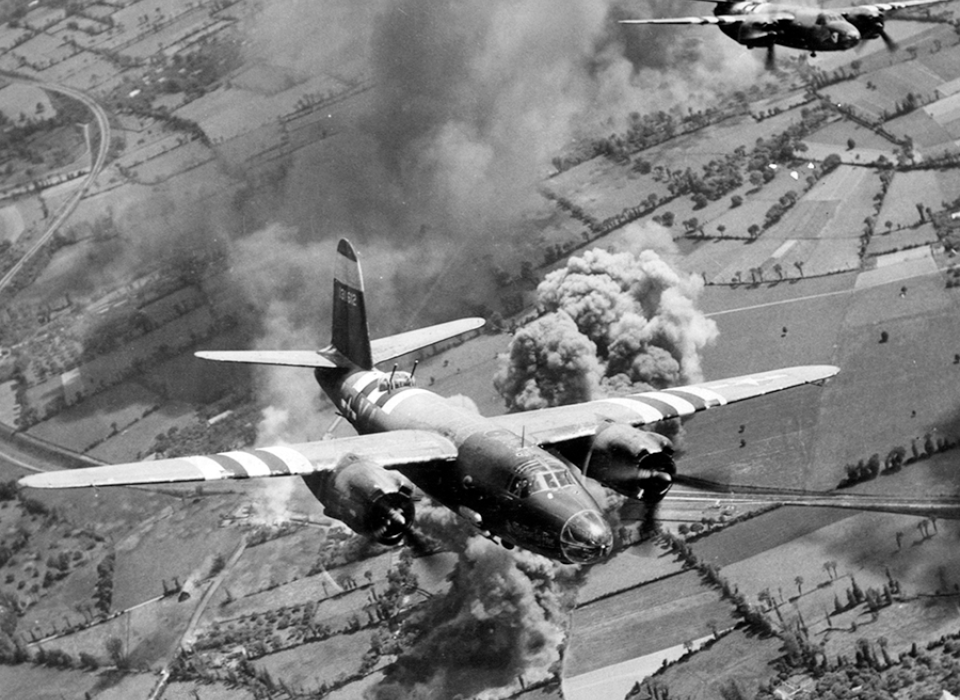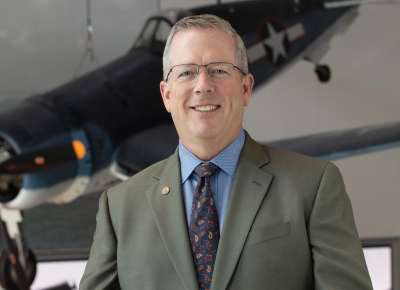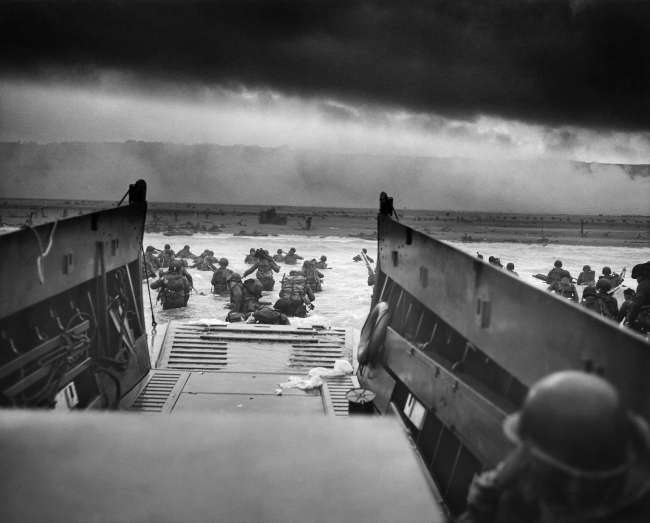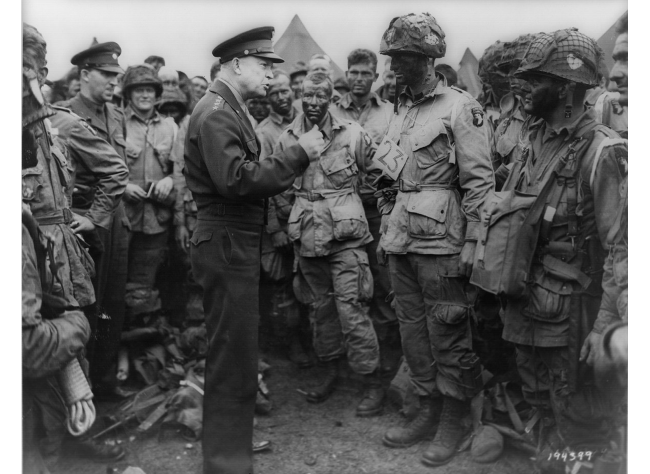Top Photo: Two Marauder medium bombers of the Ninth Air Force leaving a road and rail junction behind the German lines battered by bomb bursts. U.S. National Archives NAID: 204894251
In one of his first acts as Supreme Commander, Allied Expeditionary Force in February 1944, General Dwight D. Eisenhower gained control of the various American, British, and Canadian air units in the European theater of operations, so that he could focus their efforts on the success of the D-Day invasion of Normandy. Eisenhower knew that success on the beaches would require support beyond the beaches to prevent the arrival of German reinforcements. Backed by US Army Chief of Staff George C. Marshall, Eisenhower overcame the bureaucratic resistance of the heavy bomber commanders, especially Lieutenant General Carl Spaatz and Air Marshall Arthur Harris. By April, Allied bombers were attacking more targets in France than in Germany.
Using bombers as long-range artillery, Eisenhower’s staff directed the destruction of bridges, rail centers, ports, military installations, and even French towns with the intent of preventing German reinforcements from interfering with Operation Neptune, the Allied landings on the Normandy beaches. Ultimately, this air offensive resulted in the death of over 60,000 French civilians and an immense amount of damage to towns, churches, buildings, and works of art. This intense bombing operation, conducted against a friendly occupied state, resulted in a swath of physical and human destruction across northwest France that is rarely discussed as part of the D-Day landings.
As Richard Overy has written, bombing “has all too often been treated as if it could be abstracted in some way from what else was going on.” But this is a fallacy. “Bombing was always only one part of a broad strategic picture.” In this case, the various air operations that Eisenhower directed against France made up only one part of his broad operational concept. Air power, like the other military resources at his disposal, would focus on the success of operations on the ground, by hindering the enemy’s ability to respond to the amphibious invasion.
The air campaign took place in the form of eight significant operations, called lines of effort, conducted during the spring of 1944. These operations included attacks against French airfields, ports, and factories supplying equipment to the Germans and, directly supporting the Allied landings, attacks on rail centers, bridges across the Seine and Loire Rivers, and the Normandy beaches. Given the inaccuracy of aerial bombing technology at the time, these operations were bound to result not only in considerable damage to French infrastructure, but also in the wounding and death of many French civilians.
Historians have long debated the necessity and the effectiveness of Eisenhower’s air operations. Leaders of the air forces who had initially opposed the Transportation Plan, which targeted key bridges and other transportation hubs, later pointed with pride to its effectiveness. Some historians have argued that fighter-bombers had a greater impact than bombers on the movement of German reinforcements toward the front, or that the destruction of French infrastructure caused as much difficulty for the Allied advance through France as it did for the German response to the invasion. Still, the cumulative effect of the air attacks against France directly contributed to the success of the D-Day invasion, demonstrated by the fact that no decisive German reinforcements arrived at the beaches.
Stephen Bourque, Professor Emeritus at the US Army Command and General Staff College, contributed to this article.
Mark T. Calhoun, PhD
Mark T. Calhoun, PhD, is a former Senior Historian at the Jenny Craig Institute for the Study of War and Democracy.
Cite this article:
MLA Citation:
APA Citation:
Chicago Style Citation:







![Max Fuchs, New York City cantor, sings as Rabbi Sydney [sic] Lefkowitz, Richmond, VA, conducts the first Jewish services from Germany.](/sites/default/files/styles/max_650x650/public/2025-10/image1.jpg)



